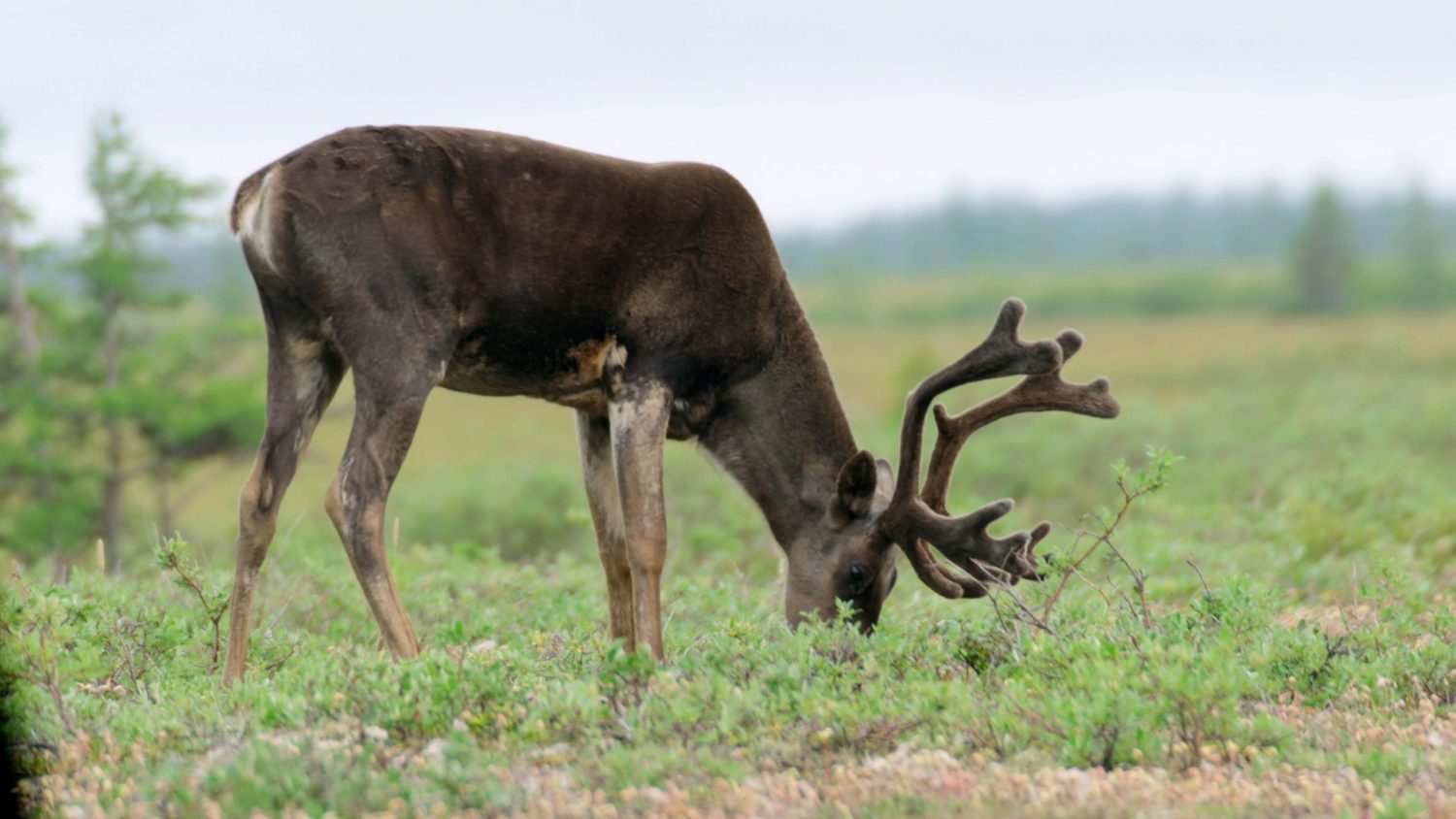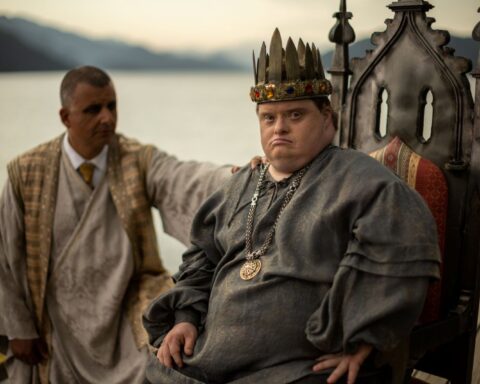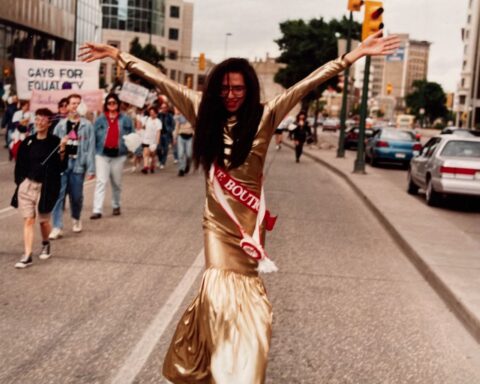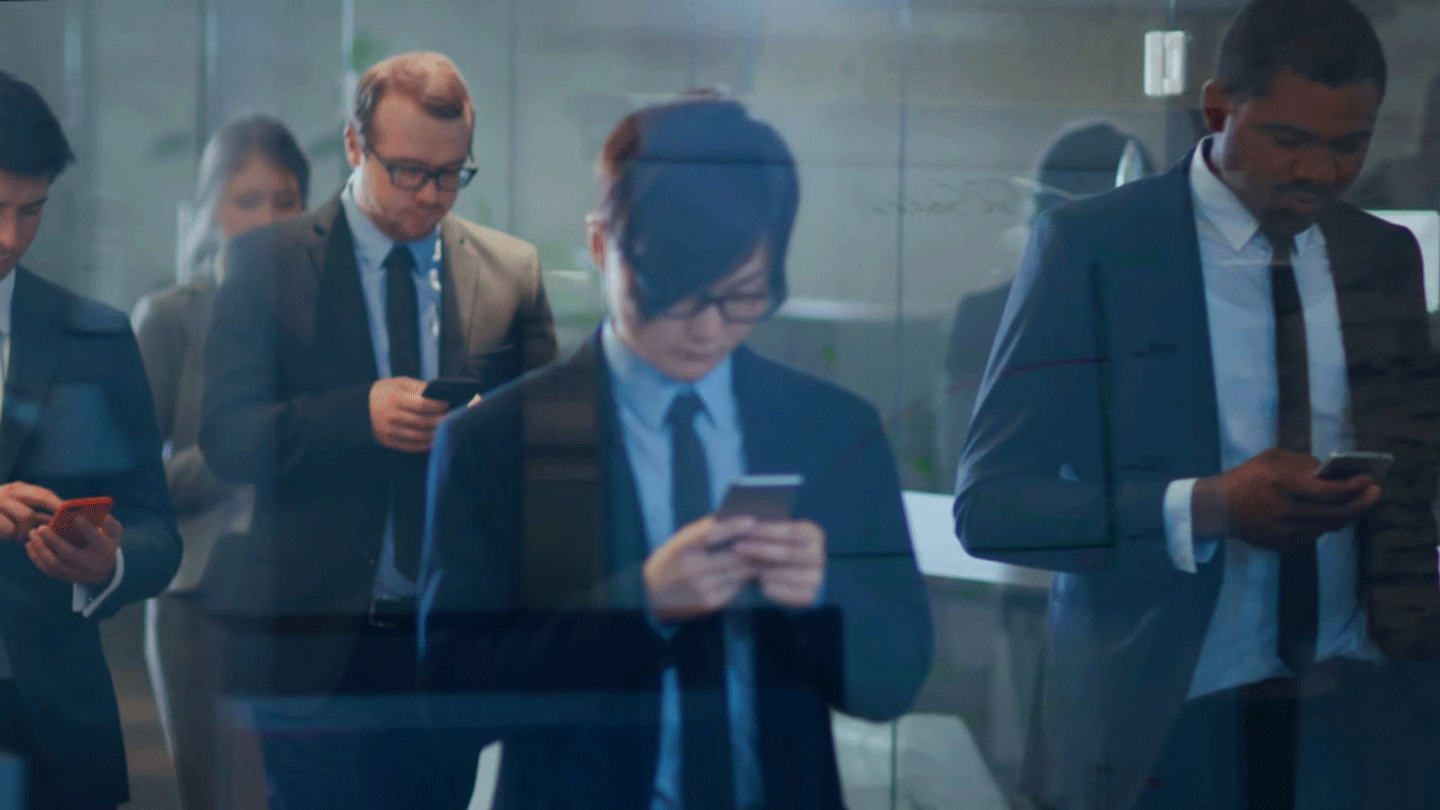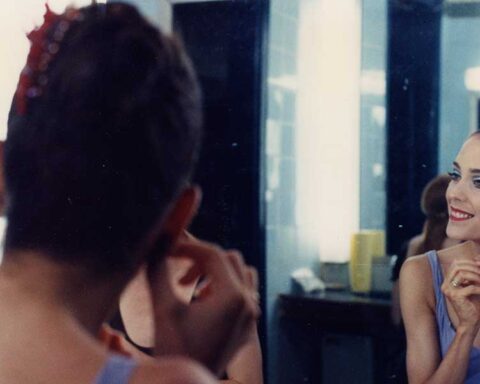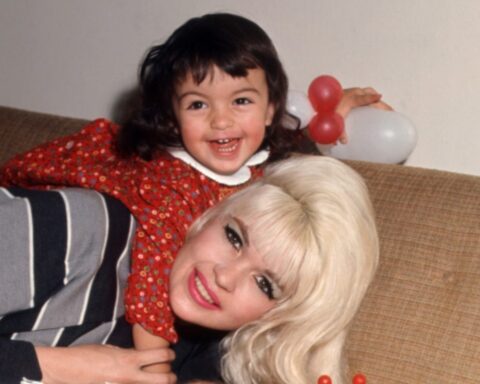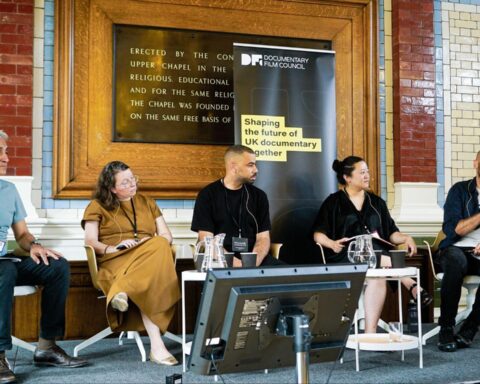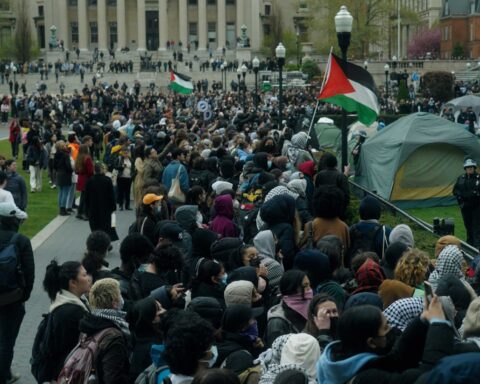When Kevin McMahon burst on the documentary scene in 1991 with the feature film The Falls, it was evident that a new authorial voice had emerged in Canada. Set in Niagara Falls, the film was a mixture of environmental criticism, satirical musings about the tawdry pop culture in the border town and a sardonic look at the politics of the region. Primitive, the company which launched The Falls, is still very much in business 30 years later, with Kevin’s brother Michael as Executive Director and Producer and Kevin as Creative Director.
In the three decades since Primitive began, the organization has produced feature docs, TV series and digital content. One of its core strengths has been the films and series that Kevin McMahon directed, most of which have focused on environmental concerns. Such films as Waterlife (2009), In the Reign of Twilight (1995), and Stolen Spirits of the Haida Gwaii (2004) have pressed the case for saving the environment and enriching the lives and power of Canada’s Indigenous and Inuit peoples. Now, Kevin McMahon is back with Borealis, a film that captures the life of the boreal forest, coming to your screens on Tuesday, December 15th via TVO and the NFB. POV spoke with McMahon about the making of the film, what is missing from the current conversation on climate change, and his philosophy of hope.
KM: Kevin McMahon
POV: Madeline Lines
POV: You’ve looked at multiple places in the natural world over the course of your career. What made you decide to focus on the boreal forest?
KM: In 2010 and 2011, we made a series of short films called the National Park Project. It was a celebration of national parks, and I was shooting with my colleague John Tran up in the Nahanni River. That’s really rugged boreal forest up there, and I was fascinated as we actually went down the river on a rafting trip. One day, we came to a place where maybe an acre of forest had slid down a cliff side and piled up at the side of the river. This was what the guides called a “drunken forest:” all the trees had keeled over below. What was fascinating to me is that it had all come down in one piece– trees, moss, animal nests, everything all kind of bound together. And it made me realize, firstly, that the boreal forest sits on inches of thin soil, and it could be dislodged by some little movement in the rocks. But the other thing was…it’s not individual trees, it’s like a hunk of forest that all together slid down like this. So I just decided to try and make a film about it. So I spent a number of years as one does, researching, writing, and, you know, ass-kissing, looking for the money.
POV: Ah, that’s good to know. I did find it interesting how they call it a drunken forest when it falls over like that.
KM: The one in the film is something a little different. It’s actually a permafrost melt, so the whole forest has collapsed into the ground. Same kind of terminology and similar look, but a different cause.
POV: You’re saying that you got embedded in the forest, and I think this film reflects that. It almost has a feeling of a forest bathing.
KM: Good! That’s what I was aiming for.
POV: How did you approach trying to capture the full sensory experience of being in the forest?
KM: Out of the research came the story of the boreal forest, which is basically that it goes up, burns itself down and like a phoenix, goes up again. There’s a complexity—the trees influence the animals, the animals influence the trees, so a community grows up over at least two centuries, usually, and sometimes three, or four. It was pretty easy to imagine. I know about climate change impacts and logging and roads, the tar sands and all that.
There was a really detailed treatment written a number of years ago, and out of that I made a storyboard, kind of an old-fashioned storyboard…[which detailed] what the film should be. And then we spent a year crisscrossing the country looking for those scenes.
The people whose voices are in the film, in some cases, were also guides. In particular, there was one, Gerry Racey, who was a real guide to the forest. We would go into one of these big parks, and he would study maps of fires, where there had been fires in various places. We could find a place where there was a fire last year and a place where there was a fire 10 years ago, and a place where there was a fire 20 years ago. Then we’d slog to the bush or go by push plane or canoe or whatever we had to do to get to those places, and shoot the scenes, then put it together.
POV: How did you select the voices that we hear? Some were guides, but did you have some of them in mind previously?
KM: A few of them. Diana Beresford-Kroeger is quite well known for writing about forests—she’s been in a film and written about the boreal forest. There were some people I had in mind that I didn’t end up getting like Suzanne Simard, who’s the woman that really discovered the science around the way trees talk to each other. But, you know, they were people that we went and sought out who could tell us about specific aspects of the forest and how it worked, and some were people we met along the way.
POV: I found that sound is used to build a great emotional effect in Borealis. At the beginning, we hear people talking about the forest’s song—and then we hear a sort of song. But towards the end of the film, we’ve come to understand the peace of the forest so much that the cracking of the trees and bulldozing just sounds deafening. How did you approach the use of sound creatively in this film?
KM: Most of the sound was created and designed by Grant Edmonds at The Dark Studio. Most of the time, it didn’t make sense to be trying to record the forest. We used forest recordings that we had gathered and that Grant gathered over the years. Also, there’s a young fellow named Alex MacPhail who worked on the film. He works with the University of Alberta and does these massive field recordings. They put dozens of microphones in the forest specifically to capture the sound of birds, because they’re doing research to monitor the boreal songbird migration. Alex gave us tons of recordings that were answering, “What does it sound like in a wetland in the morning? What does it sound like, in a pine forest in the wintertime?” We had an encyclopedic collection of recordings that had been made in the boreal. We were aiming to try to make it as realistic as we could and to try and give you a sense of the sound of the forest which is very subtle. In film, you’re always trying to bang people over the head. but in the forest, the sound is not like that. It was a bit of a challenge for us to shape that sound so that it would have some emotional content when it’s often very gentle.
POV: I can still see the image of when the tree’s “mouth” was opening and closing. How did that come about in the film?
KM: The stoma on the leaves? The film is a mixture of normal photography with some CG put in for effect. The interesting thing that I learned in the course of making the film, though, is that if you look at a leaf and you’re young and have good eyes, you can actually see on the underside of every leaf, and every pine needle, and every photosynthesizing element in a tree. You can see those stoma. And like everything else in the film, we barely scraped the surface of what they actually do. They take in and out water, they take in CO2 and release oxygen, although sometimes they also release CO2 and they release all these chemicals. We just don’t really think about how alive plants and trees actually are.
POV: We get so embedded in the life of the forest that we don’t even notice that we don’t get a good glimpse of a human until later in the film, and even then, it’s sparingly. Can you tell me about that choice?
KM: Early on in the film, Edmund Metatawabin, who’s from Fort Albany First Nation up on Hudson’s Bay, says that when the trees look at us, we would just be like these little things flitting by. One of the things I wanted to get out was that idea that time is a different thing for the different creatures on this planet. If you’re a creature that might live 250 years, what do humans look like? Probably they looked a bit like mosquitoes to us, you know, something that flits by that you’re aware of, but not for very long. Early in the film, when people are in the forest in what I would call a non-invasive way—-walking in the forest, picking herbs, fishing—-they were just subtle shadows that slipped through. Later in the film, when we start to alter the environment by trapping, cutting down branches and trees, and building tar sands or whatever, then the humans are no longer just flitting around. They become a solid presence in the forest, because they’re making marks that are not going to disappear in seconds, or minutes or days or even centuries, in some cases. For me, it’s a film grammar thing.
POV: Speaking of unique techniques, is there anything that you did differently in this film compared to your previous work?
KM: Probably the most unusual aspect of this film, in terms of conventional documentary, is hearing voices—not having a narrator and not seeing the images of the people you’re hearing. That’s something I’ve done for decades but it is more pronounced in this film than any other because the film doesn’t have a narrator. In Waterlife or McLuhan’s Wake, or even The Falls, I used disembodied voices in various ways, but they all had narrators. It was possible to do this film without a narrator. The story was so super clear that anybody could follow it.
POV: Definitely. Is there anything you’ve learned from making this film that you’re going to be carrying into your future projects, such as how you might approach depicting climate change on screen after Borealis?
KM: The thing about climate change is, it’s been more than 25 years since I started mentioning it in films. In the past 10 years, almost everything I’ve done has been related to it. On the one hand, it’s very obvious, but on the other, it’s a challenging thing to depict It’s particularly challenging in the context of natural environments, where the evidence is hard to find. I mean, we actually got extremely lucky and unlucky. And, you know, lucky for us as filmmakers in that way that we’re all a bit whorish, looking for something bad that will really make the point. Which is unlucky for us as human beings. In this case, I think one of the most extraordinary scenes in the film is the one that Joshua See shot up in the Yukon where these poor squirrels have this whole interaction with spruce trees that they’ve developed over 1000 years or more. [Note: The squirrels used to reproduce at the same time the trees would produce spruce cones. Climate change has knocked the trees out of sync with the squirrels, which is threatening the survival of the small bushy tailed rodents.]
I think that’s probably the first time any human being has seen such a vivid example of the rhythms of nature being thrown out of sync by climate change. And the funny thing is, if you listen to the climate change debate, as I obviously do fairly closely, that is something that has not really sunk in with the general public. People know about storms, and because of Australia and California they’re starting to learn about the impact it has on fires. But the reality that the rhythms of the world are all screwed up has not really sunk in, and Borealis has two really powerful examples of this. One is what happens to the squirrels, and the other is what’s happening to the trees, with what’s happening with the pine beetles. That last big dramatic drone shot where you see that, basically, the boreal forest is dying – that’s Jasper National Park. This iconic forest that Canadians have sort of hung their identity on – you know, the snow-capped pine trees, and whatever – that forest is dying. It’s in a death spiral.
But to answer your question, you learn something from the experience of making every film. But you don’t necessarily know when you’re learning it that you learned it until the next film comes along and you get the chance to use it. The very next film I’m going to make is the complete opposite of Borealis. It’s a total vérité film with human beings. I’m not sure what I learned from my lovely year-long idle in the forest will be taken to the next thing, which is going to be shot in downtown Toronto.
POV: What do you hope people come to understand from watching Borealis?
KM: Most of my work is intended to try to make you look at the world in a little bit of a different way. I certainly hope that after you watch the film, when you walk down the street and look at a tree, you’ll think a little bit differently about it. You’ll realize that tree is talking to the other trees on the street. You want people to understand the hidden life of what’s going on with plants and animals and trees, and therefore, hopefully develop a little greater empathy for those non-human creatures in the world. Beyond that, the big takeaway from this film, as far as I’m concerned, is that the boreal forest is dying, and we are doing a super shitty job of taking care of it.
I think that in Canada – and this has been a theme of mine for decades – we pat ourselves on the back for being fresh faced boy scout-types, and we have this sense of ourselves as being green because we have so much green. The best thing about my career is I’ve been able to travel so much around this country. And it is a huge, huge country, and we do have just incredible, astonishing wilderness here–and we are wrecking it. We’re wrecking it in an extremely heedless, pointless, stupid kind of way. So I want that to sink in with people.
I didn’t know when I started this project 10 years ago about the state of the forest. I was intending to make a film about how the forest worked. I did not realize until I started really talking to scientists that it is dying.
All those people at the end of the film that talk about the fact that the forest is collapsing, and we’re gonna end up with a shrubland, and the forest emits more carbon than it sequesters–those are all Canadian government scientists. They’re not environmentalists. There’s no environmentalist voice in this film, in fact. I didn’t go to Greenpeace or any of those kinds of people, I went only to people who have a direct, material day-to-day interaction with the forest. Those people at the end of the film are on your payroll, and their job is to figure out what’s going. That’s what they’ve figured out, and I don’t think hardly anybody in this country knows that.
POV: In past interviews with you, journalists often ask, “Kevin, do you have hope for the future?” How are you feeling in terms of that? Do you come away from this film with a sense of hope or an idea as to how we can go forward?
KM: I had a mentor and inspiration, a woman called Ursula Franklin, who was is a well-known scientist and peace activist. She had this line she used to repeat all the time, “Despair is a luxury we cannot afford.” And that’s how I feel. So I always have hope. That’s what I argue to some of my investors! In Borealis, I had the tree planter Isabella saying that despite things being fucked up, you basically have got to roll up your sleeves and get on with it and make it better. That’s the model that I live by really, because if I didn’t have hope I wouldn’t bother making these films, I’d just retire.
You can’t afford to not have hope. The one thing you can do when you think about what’s happening to trees, is to plant a tree. Like, it’s easy, anybody can do it, and you can do it pretty much anywhere. It’s an inherently hopeful act. At the end of Borealis, the last few shots are of dead trees, and then, new fresh trees being born. And that’s the message that a tree gives you.




